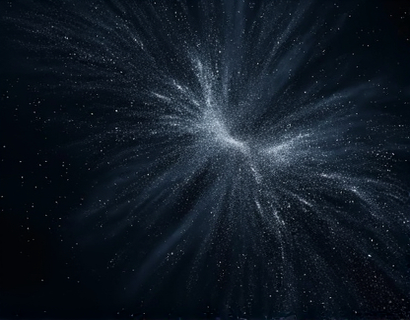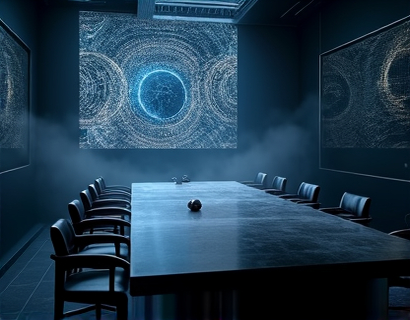Unlocking the Universe: In-Depth Insights for Curious Minds
The cosmos, an endless expanse of mystery and wonder, has captivated human imagination for centuries. From the earliest stargazers to modern astrophysicists, the quest to understand the universe drives curiosity and innovation. This comprehensive guide aims to embark on an enlightening journey through the cosmos, providing in-depth insights into various aspects of cosmic knowledge. Designed for curious minds, this collection of articles and current insights covers a wide array of topics, from the fundamental building blocks of the universe to the latest discoveries in astronomy and beyond. Join a community of like-minded individuals and expand your horizons, fostering a passion for learning and discovery.
Fundamentals of the Universe
The journey begins with understanding the fundamental components that make up the universe. At the core are elements such as matter and energy, which interact in complex ways to form the structures we observe. Matter, the physical substance that constitutes stars, planets, and everything tangible, is composed of atoms. These atoms are made up of protons, neutrons, and electrons, the building blocks of matter. Energy, on the other hand, is the force that drives the universe, manifesting in various forms such as light, heat, and kinetic energy.
The universe itself is vast and dynamic, expanding continuously since the Big Bang, the event that marked its inception approximately 13.8 billion years ago. This expansion is not uniform; it accelerates over time, a phenomenon attributed to dark energy, an mysterious form of energy that permeates all of space. Understanding the Big Bang and the subsequent evolution of the universe involves delving into cosmology, the study of the origin, structure, and fate of the universe.
Galaxies and Cosmic Structures
Galaxies are massive systems composed of stars, gas, dust, and dark matter, bound together by gravity. Our own galaxy, the Milky Way, is just one of billions in the observable universe. Each galaxy can contain hundreds of billions of stars, and these stars often form clusters, nebulae, and other structures. The study of galaxies provides insights into the large-scale structure of the universe and the processes that govern the formation and evolution of cosmic structures.
Beyond galaxies lie even larger structures, such as galaxy clusters and superclusters, which are interconnected by vast networks of dark matter. These structures are not randomly distributed but form a cosmic web, a complex lattice that spans the universe. Understanding these structures helps scientists unravel the mysteries of dark matter and dark energy, two of the most significant unsolved problems in modern physics.
Stars and Their Life Cycles
Stars are the luminous giants of the universe, powered by nuclear fusion in their cores. The life cycle of a star depends on its mass, with smaller stars like our Sun living longer lives compared to massive stars that burn brightly but briefly. The process of star formation begins in molecular clouds, vast regions of gas and dust where gravity causes the material to collapse and form protostars. As these protostars accrete more material, they heat up and eventually ignite nuclear fusion, marking the birth of a new star.
The main sequence phase, where a star spends the majority of its life, is characterized by a stable balance between the inward pull of gravity and the outward pressure from nuclear fusion. Once the hydrogen fuel in the core is depleted, the star evolves into a red giant, expanding and cooling as it begins to fuse heavier elements. The final stages of a star's life can result in various outcomes, from peaceful planetary nebulae to violent supernovae, depending on the star's initial mass.
Planetary Systems and the Search for Life
Planets form within the protoplanetary disks that surround young stars. These disks consist of gas and dust that gradually coalesce into solid bodies through a process called accretion. Over time, these bodies grow larger, eventually forming planets. The diversity of planetary systems discovered in recent years has expanded our understanding of planet formation and the potential for habitable worlds.
The search for extraterrestrial life is a captivating aspect of modern astronomy. Scientists focus on identifying exoplanets, particularly those located in the habitable zone of their stars, where conditions might allow for liquid water to exist. The discovery of exoplanets with Earth-like characteristics has sparked hope that we might one day find evidence of life beyond our solar system. Techniques such as the transit method and radial velocity measurements have been instrumental in detecting these distant worlds.
Black Holes and Neutron Stars
Among the most enigmatic objects in the universe are black holes and neutron stars, remnants of massive stars that have undergone supernova explosions. Black holes are regions of spacetime where gravity is so strong that nothing, not even light, can escape. They are defined by their event horizons, the boundaries beyond which nothing can return. The study of black holes has led to groundbreaking discoveries, including the first direct image of a black hole's event horizon captured by the Event Horizon Telescope in 2025.
Neutron stars, on the other hand, are the dense cores left behind after a supernova, composed almost entirely of neutrons. These incredibly dense objects can pack the mass of the Sun into a sphere only about 20 kilometers in diameter. Neutron stars exhibit extreme physical conditions, making them valuable laboratories for studying nuclear physics and the behavior of matter under extreme pressures and temperatures.
Cosmic Phenomena: Supernovae and Gamma-Ray Bursts
Supernovae and gamma-ray bursts are among the most energetic events in the universe. Supernovae occur when a star reaches the end of its life and explodes, releasing an enormous amount of energy and ejecting heavy elements into space. These explosions not only mark the death of a star but also contribute to the chemical enrichment of the interstellar medium, seeding future generations of stars and planets.
Gamma-ray bursts, on the other hand, are brief but intense flashes of gamma rays, the most energetic form of electromagnetic radiation. These bursts are thought to be associated with the collapse of massive stars or the merger of neutron stars. They are detected by space-based observatories and provide insights into some of the most extreme processes in the universe, including the formation of black holes and the synthesis of heavy elements.
Observational Tools and Techniques
Advancements in observational technology have revolutionized our ability to study the universe. Telescopes, both ground-based and space-based, play a crucial role in gathering data across the electromagnetic spectrum. From radio telescopes that detect long-wavelength signals to gamma-ray observatories that capture the highest energy photons, each type of telescope offers unique insights into different aspects of the cosmos.
Space missions like the Hubble Space Telescope, the Chandra Investigate Observatory, and the James Webb Space Telescope have provided unprecedented views of the universe, from the earliest galaxies to the formation of planets. These instruments, combined with sophisticated data analysis techniques, enable scientists to probe the universe in ways previously unimaginable.
The Role of Theoretical Physics
Theoretical physics complements observational astronomy by providing frameworks to understand and predict cosmic phenomena. Concepts such as general relativity, quantum mechanics, and string theory offer different perspectives on the fundamental nature of the universe. General relativity, Einstein's theory of gravity, has been instrumental in explaining the behavior of massive objects and the expansion of the universe.
Quantum mechanics, on the other hand, governs the behavior of particles at the smallest scales. The challenge of reconciling general relativity with quantum mechanics has led to the development of theories like loop quantum gravity and string theory, which aim to provide a unified description of all physical phenomena. These theoretical frameworks not only deepen our understanding of the universe but also guide the design of future experiments and observations.
Future Prospects and Open Questions
The quest to unlock the universe is far from over, with numerous open questions and exciting prospects on the horizon. One of the most profound questions is the nature of dark matter and dark energy, which together make up about 95% of the universe's total content. Understanding these mysterious components is crucial for a complete picture of the cosmos.
Another major frontier is the exploration of the early universe, particularly the epoch of cosmic inflation and the conditions that existed just after the Big Bang. Future missions, such as the LiteBIRD satellite and the Simons Observatory, aim to probe the cosmic microwave background radiation with unprecedented precision, potentially revealing new insights into the universe's earliest moments.
Additionally, the search for extraterrestrial intelligence (SETI) continues to captivate scientists and the public alike. Advances in technology and the discovery of potentially habitable exoplanets have renewed interest in the possibility of finding intelligent life beyond Earth. While no definitive evidence has been found yet, the ongoing efforts to listen to the cosmos remain a vital part of our exploration.
As we stand on the brink of new discoveries, the passion for learning and discovery continues to drive humanity forward. The universe, with all its mysteries, remains an endless source of inspiration and knowledge, inviting us to look up and explore.










































